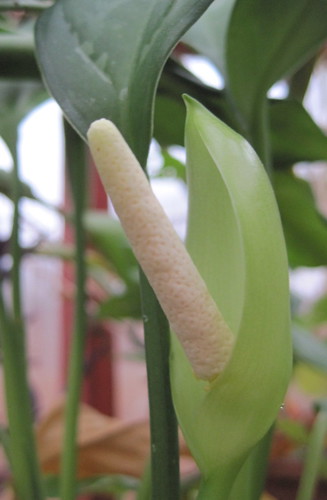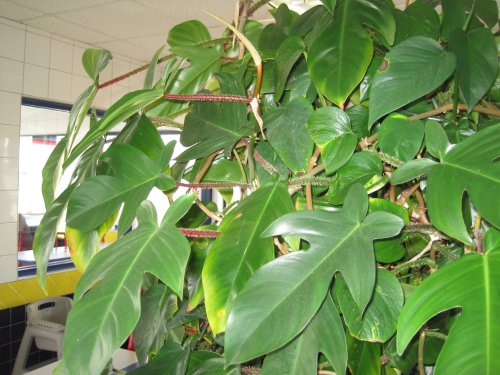Over Thanksgiving my family did something a little out of the norm (for us) and went on a 7 day Caribbean cruise. It was a wonderful trip and we got to spend time with lots of my family (10 of us in all). When our ship docked at Cozumel, Mexico, Christie and I went on a shore excursion over to the mainland to visit the Mayan ruins at Tulum, just south of Playa del Carmen.
 |
| Tulum ruins on the Caribbean coast |
The ruins were beautiful and interesting. They are set right on the coast and it's just gorgeous.
 |
| Ruins along the Caribbean coastline |
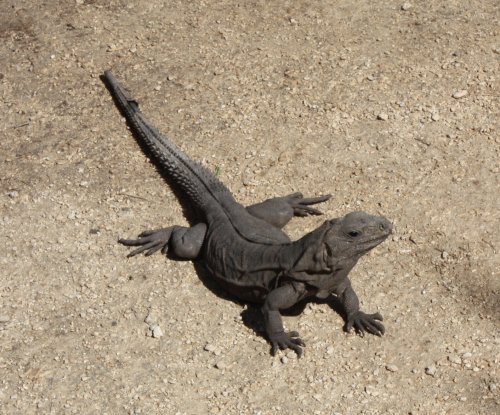 |
| Black iguana |
The grounds are covered with iguanas. We probably saw 50 or more in the hour and a half that we were there. One in particular, really wanted to pose for us.
 |
| Iguana posing on some warm rocks |
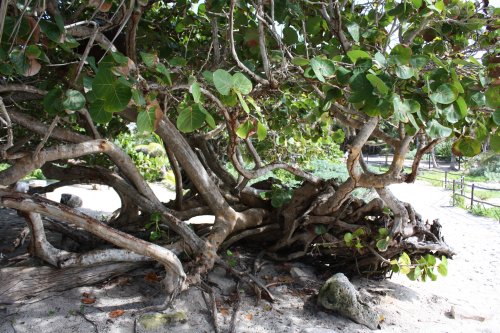 |
| Sea grape tree (Coccoloba uvifera) |
In terms of plant life, there were a lot of Sea Grape trees (
Coccoloba uvifera) all over the grounds. Some were full-fledged trees, with regular trunks. Others were growing more like shrubs or creeping along rock walls, having sprouted from a crack in the cliff face.
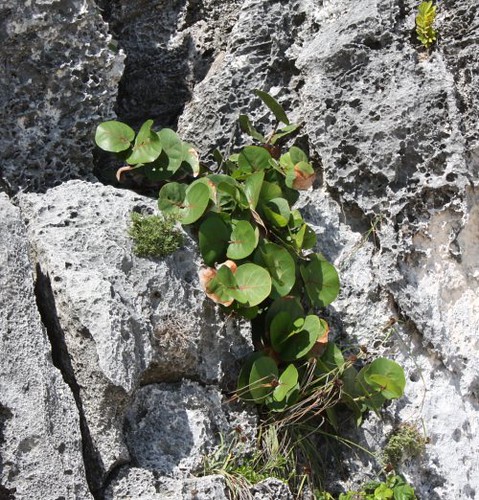 |
| Sea grape (Coccoloba uvifera) growing on cliff face near beach |
Another common plant on the grounds was some species of terrestrial bird's nest
Anthuriums. Many of these
Anthurium had inflorescences. I was taking a picture of one inflorescence that had a deformed branching spadix when I noticed that a praying mantis was perched on the spadix! I wish I hadn't been in such a hurry and I could have gotten a little better picture. But we were headed back to the bus and I didn't want to get left behind!
 |
| Praying mantis on an Anthurium inflorescence |
 |
| Anthurium |
There were a lot of these large leaved Anthuriums with undulate leaves and raised midribs. The only other type of Anthurium I observed was the smaller specimen below.
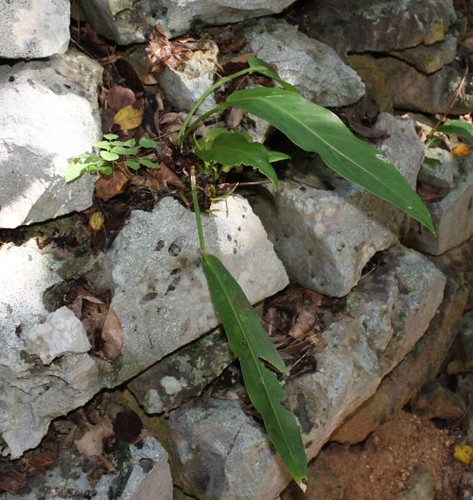 |
| Anthurium |
Just outside of the entrance to the ruins park was a large bed of Sansevierias.
 |
| Christie with Sansevierias |
I observed some other neat plants, but didn't know what they were.
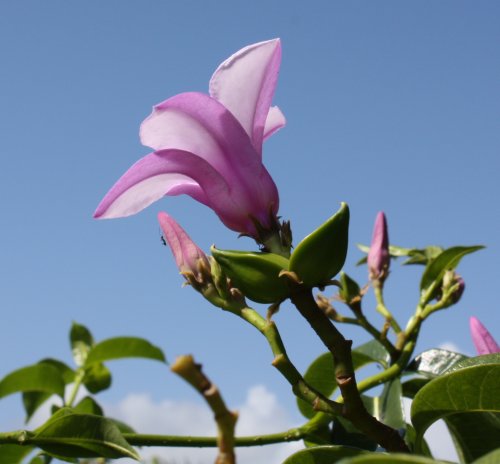 |
| Unknown flowering plant, possible Mandevilla |
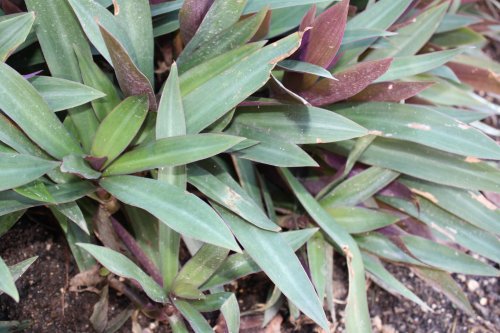 |
| Tradescantia spathacea (thanks to mr_subjunctive) - Dense border plant with neat foliage |
The plant above had really neat foliage and was growing all over the place as a border to all of the sidewalks. The underside of the leaves is purple.
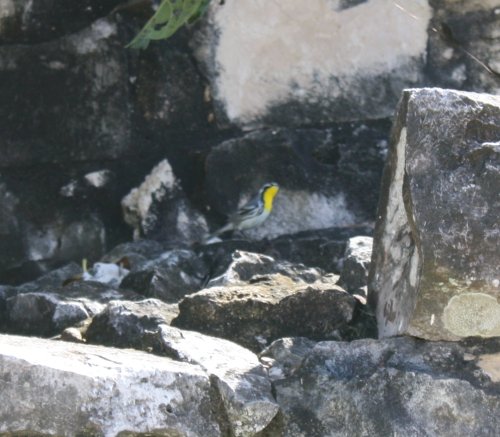 |
| Yellow-throated Warbler among the ruins |
I also observed a couple of neat birds. One was the tiny yellow-breasted bird hopping along a rock wall, pictured above. The other almost looked like a peacock, with very colorful markings. I had to take the picture (below) from a distance, so I didn't get as good of a shot as I would have liked.
[2011-01-30 Update: Tony has informed me that this is likely the Ocellated Turkey (Meleagris ocellata).]
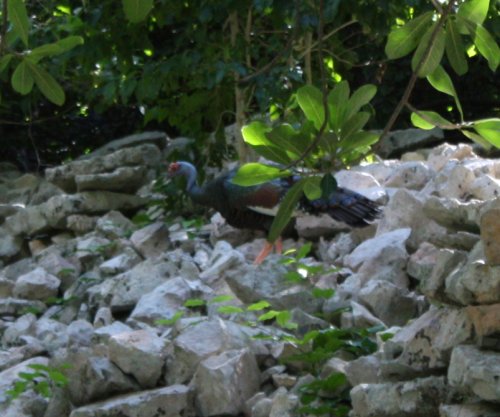 |
| Colorful mystery bird - Ocellated Turkey (Meleagris ocellata) |
It was a great place to visit and I'm really glad we took this excursion.
 |
| Me and Christie at the Tulum Ruins |
